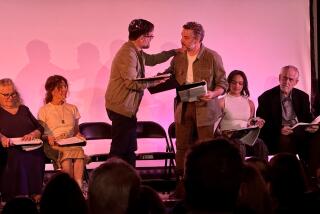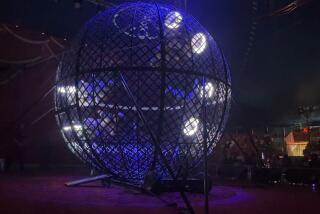Pilgrims to Medieval Cathedral Are Virtually There
The time machine drops you onto the dusty streets of Santiago de Compostela in northwestern Spain. The year is 1211.
A few hundred yards ahead is a Romanesque cathedral, nearly complete after 100 years of construction. It seems to soar toward the heavens. The cathedral’s grandeur befits one of Christianity’s holiest sites, reportedly containing the remains of the apostle James the Great.
Entering the side door of the cathedral used by most pilgrims, you hear shoes clicking on the stone floor, muffled voices, and Latin chants from the St. James liturgy and music from medieval flutes, drums and bagpipes.
You walk behind the altar and go down five steps of a narrow passageway to the tomb of St. James, brother of John the Evangelist and a member of Jesus’ inner circle. James was a fisherman called by Jesus and thought to have evangelized in Spain. He was beheaded in Jerusalem in AD 44 and believed to be the first of the apostles to suffer a martyr’s death.
It occurs to you that millions of people have traveled this same path -- to this very spot -- over the last thousand years, making it one of Christendom’s most popular pilgrimages.
Goosebumps rise on your arm -- and you haven’t even left Los Angeles.
Which is the idea behind UCLA’s Visualization Portal, a virtual reality theater that re-creates ancient worlds, natural phenomena such as tornados, and the inner workings of the human body -- showing, for instance, a fibrillating heart and how experimental drugs might return its beat to normal.
The 3D re-creations are used for research, teaching, attracting grants and outreach to the public. Professors -- with disciplines including architecture, chemistry, literature, atmospheric sciences, performing arts and astronomy -- and technology experts have worked together to create various virtual realties.
More than 40 architectural computer models have been developed, many of them depicting ancient buildings and towns that allow viewers to virtually stroll down the streets, step inside a home or even fly over the walled cities.
Seated in a comfortable theater that holds about 40 people, you can peek into the 26 buildings and monuments of the Roman Forum in AD 400; study frescoes painted on a bedroom wall in a Pompeii villa in AD 79; and enter the Temple Mount in Jerusalem in AD 70, just before its destruction by Roman troops.
St. James Catholic Church in Redondo Beach is using Sunday -- the feast day for St. James -- to introduce UCLA’s virtual Santiago de Compostela Cathedral to parishioners. A DVD about the project will be shown to congregants in the parish hall, and later this summer, 40 parishioners will make a virtual pilgrimage in the UCLA theater.
Other groups can arrange for a free campus showing, which lasts about an hour. Last year, the Visualization Portal drew about 2,700 off-campus visitors for its various projects, including the cathedral.
This year, about 250,000 pilgrims are expected to make the real journey on foot, bike or horseback along El Camino de Santiago, taking one of a half-dozen paths throughout Spain that end at the cathedral.
Jenna Bush, the president’s daughter, walked 119 miles of the pilgrimage in May to celebrate her college graduation.
The pilgrimage’s popularity has been heightened in 2004 because this is a jubilee or anniversary year -- an observance that happens whenever the July 25 feast day of St. James falls on Sunday. It’s a yearlong window when Catholic pilgrims who complete the journey in Spain receive a plenary indulgence -- a pass out of purgatory for sins committed to that point.
“The pilgrimage is so central to Spanish culture, it just pops up everywhere. It’s like a major artery or spinal cord for Spain,” said professor John Dagenais, who spearheaded the 4-year-old virtual cathedral project. Using writings of the Middle Ages inspired by the pilgrimage, Dagenais said he was able to develop more of “an itinerary than a syllabus,” and student interest was sparked.
The virtual reality model culminates the course. Using technology first employed in military flight simulators, it allows students to make their way through the three-dimensional holy site that inspired so many stories, songs, legends and poems.
“I wanted to give them some sort of concrete reality to move around in, instead of just the literary works and [biographies of] their authors,” Dagenais said.
Students who couldn’t make the professor’s annual summer trip to Spain appreciate the chance to tour the cathedral via computer.
“It allows someone from modern times to participate in a medieval experience,” said Douglas Reid, a Dagenais student who graduated from UCLA this year. He decided to visit Santiago de Compostela after viewing it virtually. “I was able to understand the things the authors were writing about. It made very dry and boring literature exciting.”
When looking at the 9-by-24-foot curved screen with 160-degree views, observers also can access backup data and historical documents, which are projected on the sides of the screen. The information includes primary sources such as writings and sketches that helped the virtual architects restore the cathedral to its original state.
If academics disagree on how the building looked in 1211, the computer model can show the various alternatives with accompanying explanations.
“It allows viewers and scholars to judge the theories in real time and discuss which solution is better and why,” said Dagenais, adding that this is the first time many scholars in the humanities have had a laboratory to run experiments.
With another flick of a computer switch, the front of the Romanesque cathedral can be updated to its baroque exterior of today, showing how dramatically the building has changed.
To enhance the Santiago de Compostela model, Dagenais has independent-study students in Spain collect data from the cathedral each summer. Last year, Reid was part of a group that recorded ambient sound. Armed with digital equipment, Reid and seven other students simultaneously recorded sounds throughout the chapel that now play in the UCLA theater.
“The sounds [in 1211] would have just blown you away,” Dagenais said. “It was noisy, with conversations in many languages and music from pilgrims who came from different countries.”
You’re back inside the cathedral, walking down the center of the pewless building. Above is a barrel-vaulted ceiling the length of a football field. To your right, on the second floor, is an open gallery where pilgrims stay.
Near the entrance, you see a pilgrim placing his head on the bust of the cathedral’s architect, Master Mateo. The traveler touches his forehead to Mateo’s -- hoping that some of the genius will rub off.
You reluctantly walk out of the church and into the bright Galician sun. Your pilgrimage is over. It’s time to get back to the 21st century.
To arrange for a free group viewing of Spain’s Santiago de Compostela Cathedral at UCLA’s Visualization Portal, call (310) 794-5169 or e-mail [email protected].
More to Read
Sign up for The Wild
We’ll help you find the best places to hike, bike and run, as well as the perfect silent spots for meditation and yoga.
You may occasionally receive promotional content from the Los Angeles Times.






